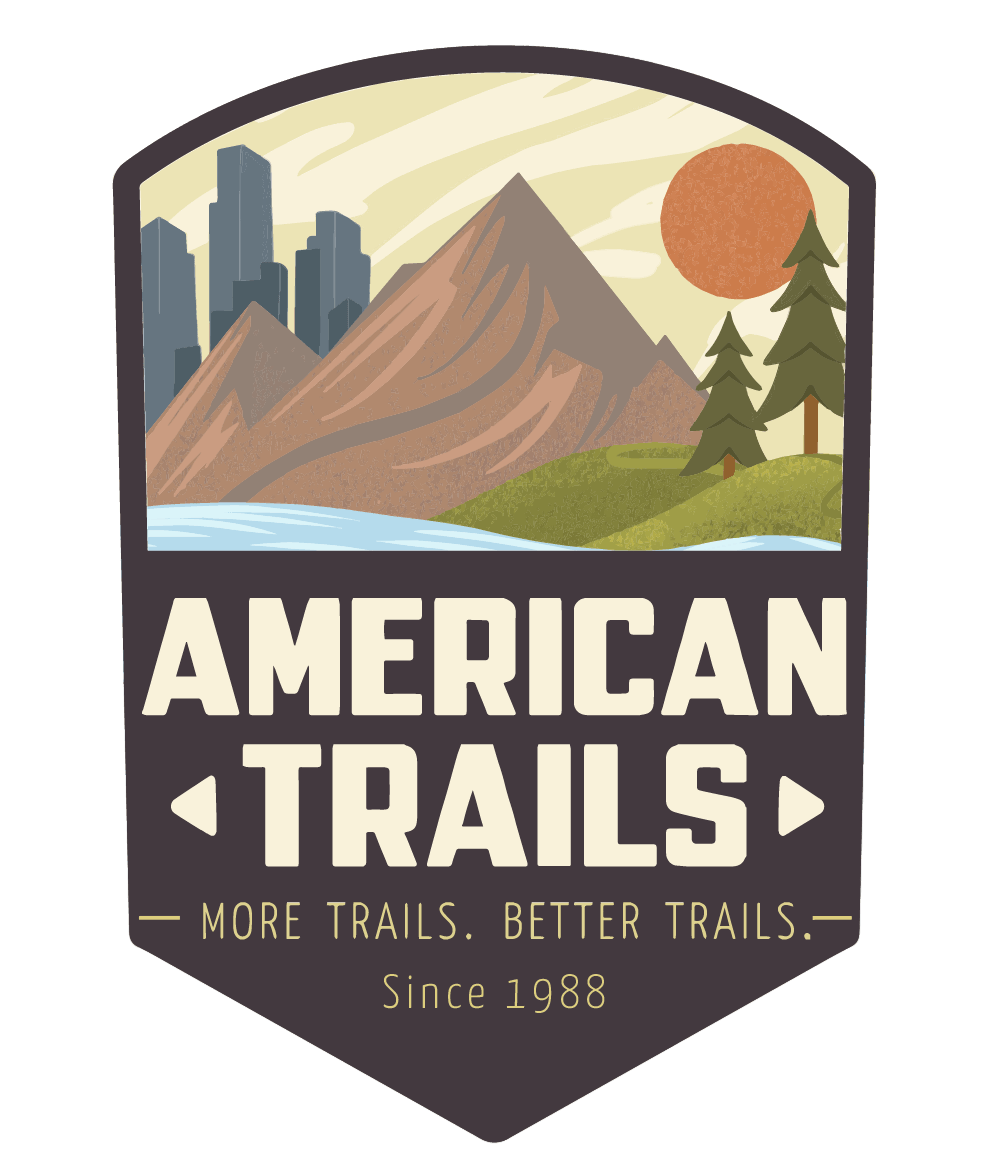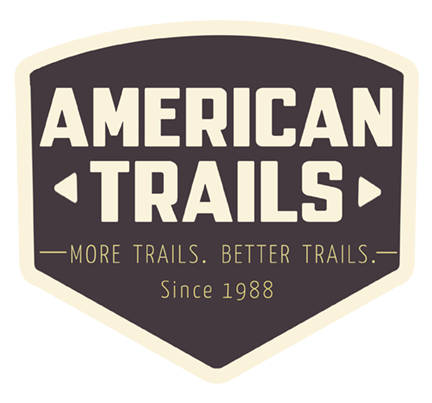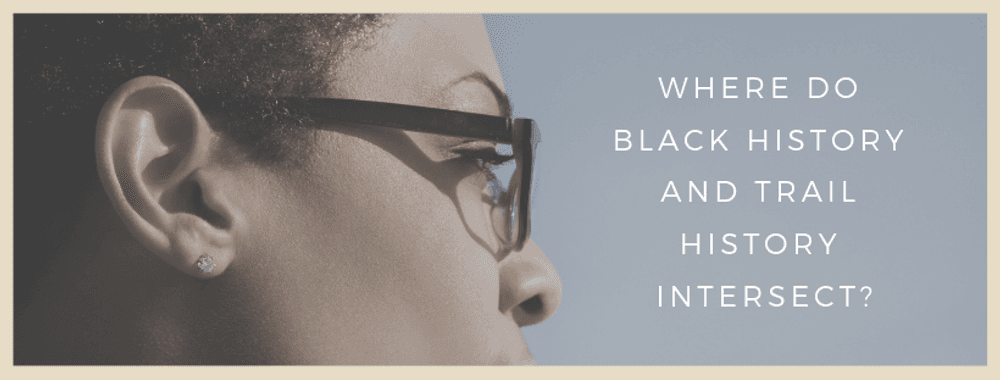




February is Black History Month, and a perfect time to shine a light on some well known, and some lesser known, ways in which African Americans have helped shape our nation's trail and park history.

When Thomas Jefferson sent William Clark and Meriwether Lewis on the Corps of Discovery Expedition in 1804 they put together a crew of the best men they could find. Many people familiar with this story don't realize that those men included a slave of William Clark named York. York had originally belonged to William Clark's father, before being willed to Clark. York was the only original crew member who was married, but also had the distinction of being the only one with no choice in participating.
York's life story isn't well known, and as a slave he was not able to tell his story in his own words as many of the other men in the Corps of Discovery did. However, he is mentioned in the diaries of both Lewis and Clark, and at one point is even credited with saving the lives of Clark, Sacagawea, and her child. It is fair to say that without York the journey would have gone very differently.
When the Corps of Discovery returned from the Expedition, each member - except York - received double pay and 320 acres of land. York was not rewarded for his accomplishments or for his bravery, but rather William Clark wrote harshly of York's wish to be freed and reunited with his wife, who remained in York's native Kentucky. Clark did eventually free York, after many more years of servitude, but almost nothing is known of York's later life. Today a statue of York stands in Louisville, Kentucky, and an Island in Missouri is named in his honor, giving him the recognition he did not receive during his lifetime for the vital role he played in our nation's history.
Buffalo Soldiers were regiments of black soldiers originally created during the civil war. They were given their name by Native American tribes, who thought the dark skin of the soldiers was reminiscent of the colors of a buffalo, but historians disagree on exactly which tribe the term originated from. After the civil war these regiments were used for a number of things, but eventually were sent west with other army regiments to help care of our National Parks.
Between the years of 1891 - 1913 the U.S. Army served as the official administrator of both Yosemite and Sequoia National parks, and created a system of administration that would later be built upon and lead to our modern day park management. This means that the Buffalo Soldiers were among some of our nation's very first park rangers. Among these soldiers was Charles Young, who had the distinction of being the third black man to ever graduate from West Point. Young was one of a very small number of black officers, and he served as acting superintendent of Sequoia national Park in 1903, making him the first black superintendent of a National Park.
The duties the Buffalo Soldiers carried out during this time were groundbreaking in many ways. They had many tasks, such as curbing poaching on public lands, battling wildfires, and guarding against timber theft, but they were also trail builders. In fact, they have been credited with creating the first marked trail in a National Park System during this time. Buffalo Soldiers were also trailblazers in cycling, with the 25th Infantry embracing bike-packing in 1896. They were led by Lt. James Moss on a harrowing 800 mile round trip journey from Fort Missoula, Montana to Yellowstone National Park. This was the first time the army had used bicycles for a mission.
One of the more recent developments in the intersection of trails and black history is the Underground Railroad Bicycle Route, a 2,000 mile journey that begins in Alabama and ends in Ontario, Canada, allowing you to retrace the historical path many slaves used to escape to freedom. The route follows rivers and waterways (which were often used by those originally taking the route as a guide) through Alabama, Mississippi, Tennessee, and Kentucky. The route then continues through Ohio, New York, and ultimately into Canada.
This historical sites on this journey are too numerous to name, and relate to both the Underground Railroad and to the broader history of our country. For example, you will pass along the Natchez Chase Parkway, which is rich in Native American history, as well as many important civil war sites, that while not directly related to the Underground Railroad, do help emphasize the history of that era, and the fight that ultimately led to the freedom of all slaves.
These are just a few examples of the many ways black history has helped shaped our trail history and effected the trails world as we know it today. Diversity in the outdoors has not always been on the forefront of conversation, and honoring the legacy of these contributions plays an important role in remedying that problem.
Making Transportation Planning Applicable in Tribal Communities Research Study: Final Report
posted Dec 20, 2023
The Federal Highway Administration’s (FHWA) Office of Tribal Transportation (OTT) planning staff have observed two challenges in Tribal transportation planning: (1) that existing planning analysis tools do not always align with Tribal community context and needs and (2) it is not always clear what benefits planning provides to transportation project selection and delivery in Tribal communities.
posted Dec 20, 2023
This report and its appendices constitute a review of law, policy, and procedures, with recommendations for changes based on Tribal consultation and public comments.
posted Dec 20, 2023
The U.S. Department of Agriculture (USDA), Forest Service is recognized as a leader among Federal land management agencies in partnering collaboratively with American Indian and Alaska Native governments and indigenous communities. The Forest Service Research and Development (R&D) Deputy Area recognizes that working with tribes and indigenous groups is vital to its mission to develop and deliver knowledge and innovative technology to improve the health and use of the Nation’s forests and grasslands— both public and private.
Strengthening Tribal Consultations and Nation-to-Nation Relationships
posted Dec 20, 2023
The Tribal Relations Program strives to enhance relationships between the Forest Service, Tribes, ANCs, non-federally recognized Tribes, and Native Hawaiians, as well as American Indian, Alaska Native, and other Indigenous individuals, communities, inter-Tribal organizations, enterprises, and educational institutions, thereby improving the agency’s ability to foster effective partnerships and respect Tribal sovereignty.
1,679 views • posted 02/19/2019